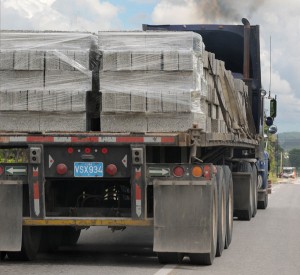Cuba’s Elusive Building Materials

HAVANA TIMES, Nov. 3 — A few days ago I read a story about how when home repair materials are put up for sale, all traces of those products disappear within 40 minutes, a fact that speaks to the real needs of citizens here in Cuba.
The truth is that the quantities delivered are insufficient compared to the growing demand by the population. Thousands of families have started construction and rehab work since the government authorized the repair, expansion and building of houses by the occupants themselves.
The allowing of sales of materials unchained a construction fever. In every neighborhood in Havana, one can see homes being repaired, understandably. Each household needs to correct decades of deferred maintenance and deterioration that resulted from the prohibitions.
The state monopolized the building of houses but never met the full need, despite its having constructed hundreds of thousands of apartments that were sold to the public at subsidized prices.
Unskilled Building Brigades and Skimping on Materials
The volunteer “micro-brigade” housing construction program centralized all building efforts for decades but was not very efficient, primarily because most of its workers lacked any basic building skills and knowledge.
The crews were made up of personnel from different workplaces—from a textile factory worker to a Ministry of Foreign Affairs staffer—as everyone who needed an apartment asked to join a “micro.”
These buildings have a poor reputation among Cubans. To swap one’s micro-brigade apartment for another home can be complicated and is rarely accomplished without putting money in the middle, even if it’s located in the best area of ??Havana.
When I first arrived in Cuba I lived in one of them, and I came to understand the reason people looked down on them, but what can you expect when the man who laid the tiles studied history at the University of Havana.

In addition, not much effort was put in by workers on the micro-brigades. No one on the crews knew if in the end they would be given an apartment or not. Alternately, they might participate in building several buildings only to earn the right to buy one that they couldn’t choose – it would be one that was assigned to them.
Another problem was that since some of the building materials were sold to surrounding the neighbors (for whom this black market operation was the only way for them to repair or expand their homes), this meant that the micro-brigade building was built with less rebar, less sand and less cement.
Lack of Supply Feeds Speculation
Since the government has opened up the sale of building materials to the public, there now exists an opportunity to build without stealing. This policy has resonated in the materials industry as well as in the lives of people who can now fix their roofs without fear of the authorities.
However, there are always those shrewd characters who will park their trucks alongside the sales area awaiting the word from a partner who works there and reserves “my guy’s cut.” Among other things, they’ll buy a load of steel rebar at $80 a quintal and resell it later at $100.
Even without favoritism it’s almost impossible to compete with them because this is “their job,” while most Cuban home rehabbers have a real job that doesn’t allow them to spend whole days waiting for trucks to show up with materials.
Nevertheless, the underlying problems are not these speculators but the shortages that feed them. This is partly due to poverty but also to the inefficiency of the agencies that should provide the public what’s necessary for building.
The official Granma newspaper maintains that the sales plans of these products are reduced to only 15 percent of what was planned due to breaches in the contracts by the principal suppliers (Sime Micons and Provari).
Such failures are not always due to a lack of financial resources. They often result from not delivering the product cost sheets on time or delays in setting retail prices.

In addition, there are those essentially bureaucratic problems, like the case of a factory in the city of Bayamo that was storing nearly a million cement blocks with no companies in place for their distribution, which also bottlenecked the continued flow of production.
I don’t know the official responsible for this “oversight,” but I’ll bet they have a nice home. My experience tells me that there are few dim-witted Cubans; behind such apparent incompetence are usually economic gains for those involved.
Inefficiency is often the shield behind which corruption hides – which up to now has marked the difference between firing and imprisonment. Yet the impact on the country is the same, it doesn’t matter whether the losses result from negligence or corruption.
It seems that the government is beginning to understand this. The trial of those responsible for the failures in renovating a water treatment plant in Santiago de Cuba might signal both a change in policy and a warning to those who are inept and those who pretend to be.
—
An authorized translation by Havana Times (from the Spanish original) published by BBC Mundo.





